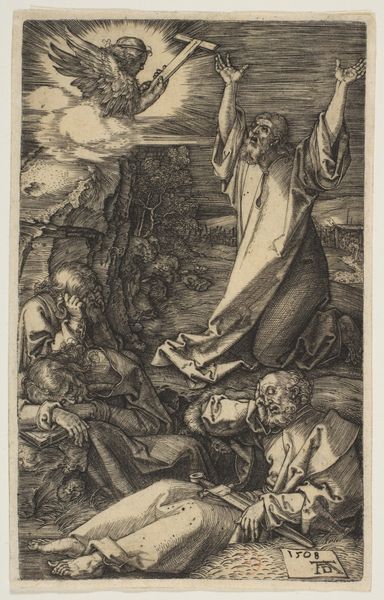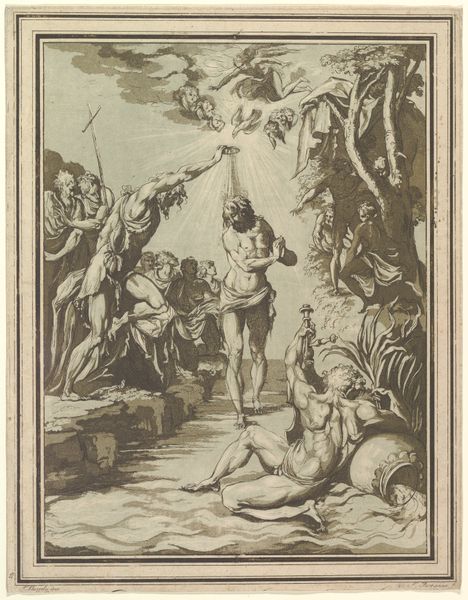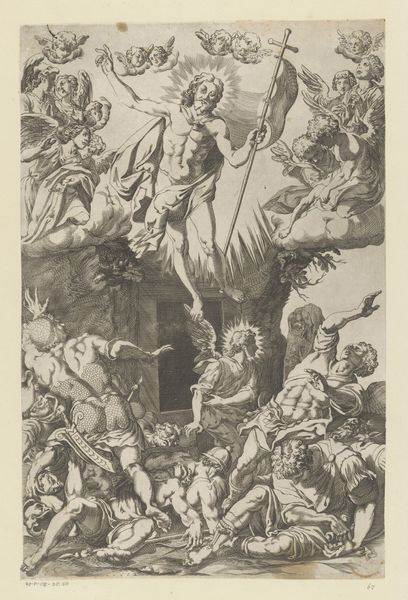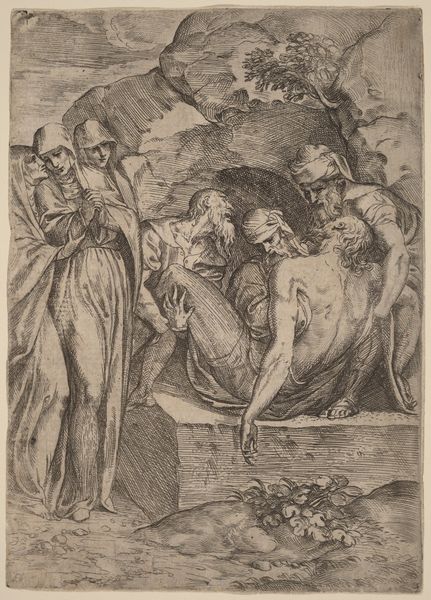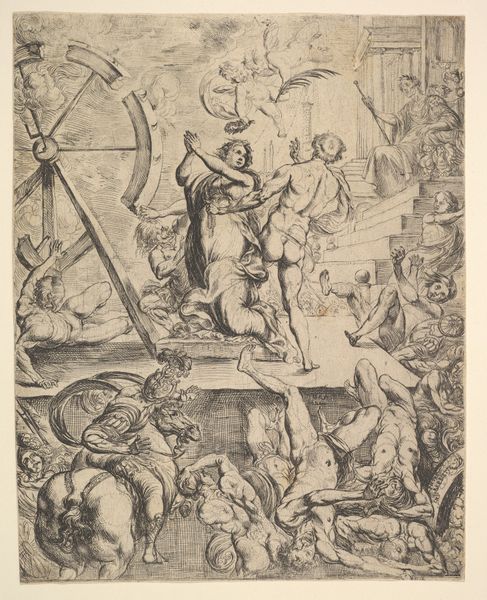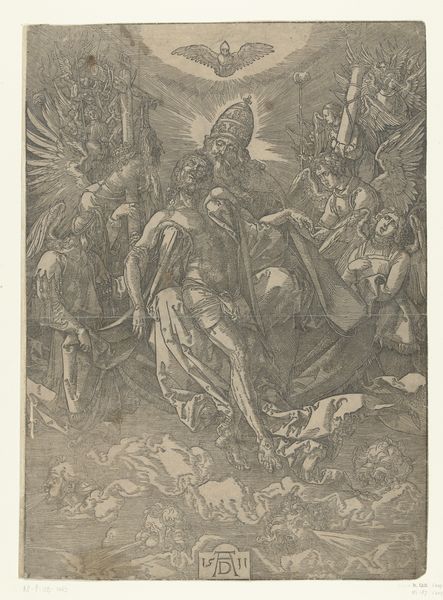
print, engraving
# print
#
figuration
#
11_renaissance
#
history-painting
#
northern-renaissance
#
engraving
Dimensions: height 224 mm, width 172 mm
Copyright: Rijks Museum: Open Domain
Curator: So delicate. This engraving, *The Entombment of Christ*, was created around 1532 by the artist known as the Master of the Die. What's your initial read on it? Editor: Melancholy, certainly. The entire scene seems draped in a sort of subdued grief. It is a moving composition with these somber tones achieved just using engraving. It feels really intimate. Curator: It’s intriguing how the Master of the Die, true to the Northern Renaissance style, manages to balance emotional intensity with such detailed lines. Think about the socio-political implications; religious art during that time often had dual purposes. It provided spiritual solace, yes, but it also functioned as a form of coded messaging, didn't it? Editor: Absolutely. Images of Christ's deposition, especially when circulated via print, become tools to explore the themes of suffering and powerlessness. Also, notice how gendered the grief appears. Is it Mary and other women who openly lament, pointing towards culturally inscribed roles dictating who can publicly grieve and how? Curator: Good point. And speaking of public versus private, look at how he's set the scene. It is open and bare but not deserted. It looks so lonely in the image. What if the engraving aimed not just to illustrate grief but also the political solitude of spiritual leadership? The absence of overtly powerful figures at Christ’s entombment might serve as commentary. Editor: True. It invites us to see beyond just the religious narrative. Also, engravings themselves as a medium, with their reproducibility, played into democratizing the image of dissent, didn't they? Bringing potentially subversive iconography into people's homes. The way that he chose that perspective of it, seems very strange for my eye but is thought-provoking in our context of discussion. Curator: Yes, the reproductive nature of engraving definitely makes this a key artifact in the history of visual protest! Even the seemingly simple act of depicting Christ's vulnerability could be interpreted as a statement against established power structures. So simple yet incredibly effective to carry some complex ideas of those years! Editor: Absolutely, art becoming a medium to mirror cultural discourse. So, when we look at an engraving of this time, we have to see beyond piety, and ask: What were the societal power dynamics, that could have informed this poignant piece?
Comments
No comments
Be the first to comment and join the conversation on the ultimate creative platform.
